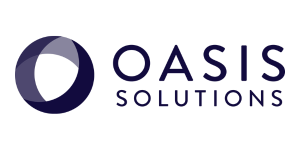Clients invest valuable resources when undergoing an ERP implementation, dedicating time and money to ensure its success and following best practices for mitigating risk during an ERP implementation.
These projects can be impacted by several factors faced by organizations including personnel issues, manufacturing problems, customer requirements, system limitations, and process inefficiencies. The convergence of these issues contributes to the overall risk involved with ERP projects, and clients rightfully want to enact the best approach to navigating uncertainty.
It’s important to establish high visibility initially at the time of investment in order to set realistic expectations. When clients approach us to help them mitigate risk over the course of their ERP implementation, there are a number of steps we follow and recommend:
1) Establish a vision.
What does the future state of the organization look like? What is the organization trying to accomplish by undergoing a project of this size and scope? Distill that vision into its finite elements and gain buy-in and alignment from all stakeholders in the company.
2) Perform a thorough discovery.
It’s important to meet with and observe individuals performing their day-to-day functions to properly define critical business processes. Transactions should be linked to one another and examined to understand their sources and desired outcomes. Collectively, these findings should be documented, shared with the team, and used as a guide to further inform the future pieces of the project.
3) Define the scope.
The scope is the roadmap by which all parties proceed through the project. This contains all the important steps, details, and deliverables required to create and deliver a project. It’s important to understand that oftentimes organizations can only undertake pieces at a time. Be open to phasing out a project so the organization consumes just enough to create value but not too much to overwhelm those directly involved with the implementation.
4) Address change management.
The reality is that it’s likely for everyone involved with a project of this size and scope to already have a full-time job serving the core duties of the company. The additional workload required during an implementation can result in unpredictable and undesired effects on the project. Governing change management from the initial stages can help create an environment that’s more predictable, more comfortable, and more manageable for those involved.
5) Obtain organization-wide commitment.
For a project to succeed, firm commitment from all aspects of the organization is required. This includes individuals in the front office, the warehouse, the marketing department, the IT group, and everyone in between. All stakeholders in the project should be fully committed to the vision, scope, plan, and tasks associated.
6) Execute the project plan.
The accumulation of all of these steps ends at the execution of the project. Ultimately, there will be a team in place with assigned tasks. Each of these tasks must be completed properly, in order, and on time. The execution and accountability of the team to execute are vital to the success of the project.
The steps to mitigating risk during an ERP implementation serve as the building blocks of successful projects. Any consultant you engage with needs to understand your business, the customers you are trying to reach, and the processes you seek to improve. Enlisting the support of a partner through these steps can help bring structure and accountability to all the effort that’s behind them.
The goal is leading a successful project that is on time and on budget, while delivering on the original vision developed by the leadership. We find that when there is full investment behind each of these steps being organized and properly followed in sequence, organizations are best suited for a successful outcome and best equipped for mitigating risk during an ERP implementation.
If your team is planning an ERP implementation or has recently implemented an ERP, contact the Oasis Solutions team to objectively evaluate the project. We can help you successfully navigate and and mitigate risk during your ERP implementation and help you achieve the success you expected to grow and thrive with your business. Let's Talk
Related Articles:
5 Red Flags That QuickBooks Isn't Working For Your Business
Characteristics of Top ERP Systems
5 Ways To Thrive After ERP Go Live



